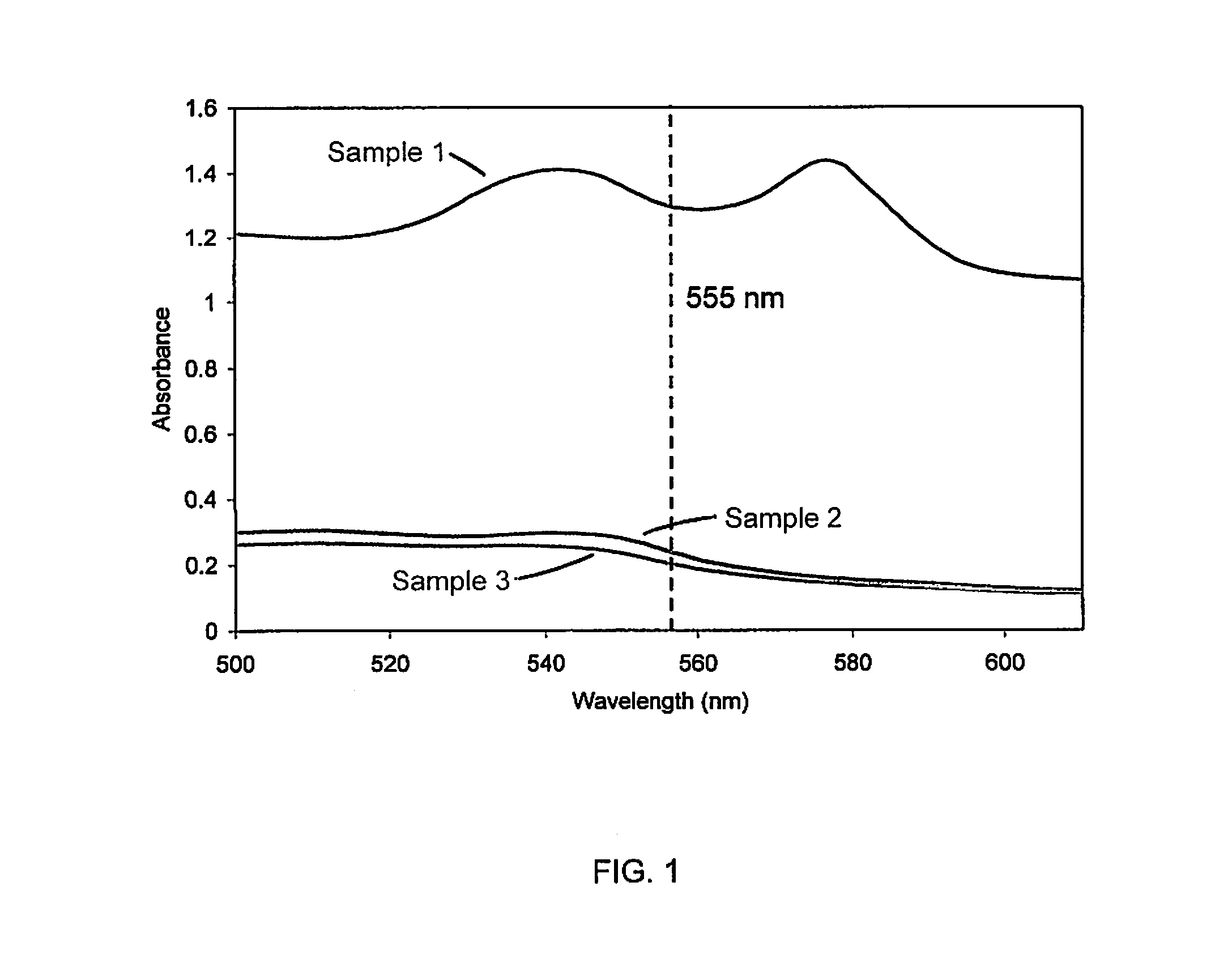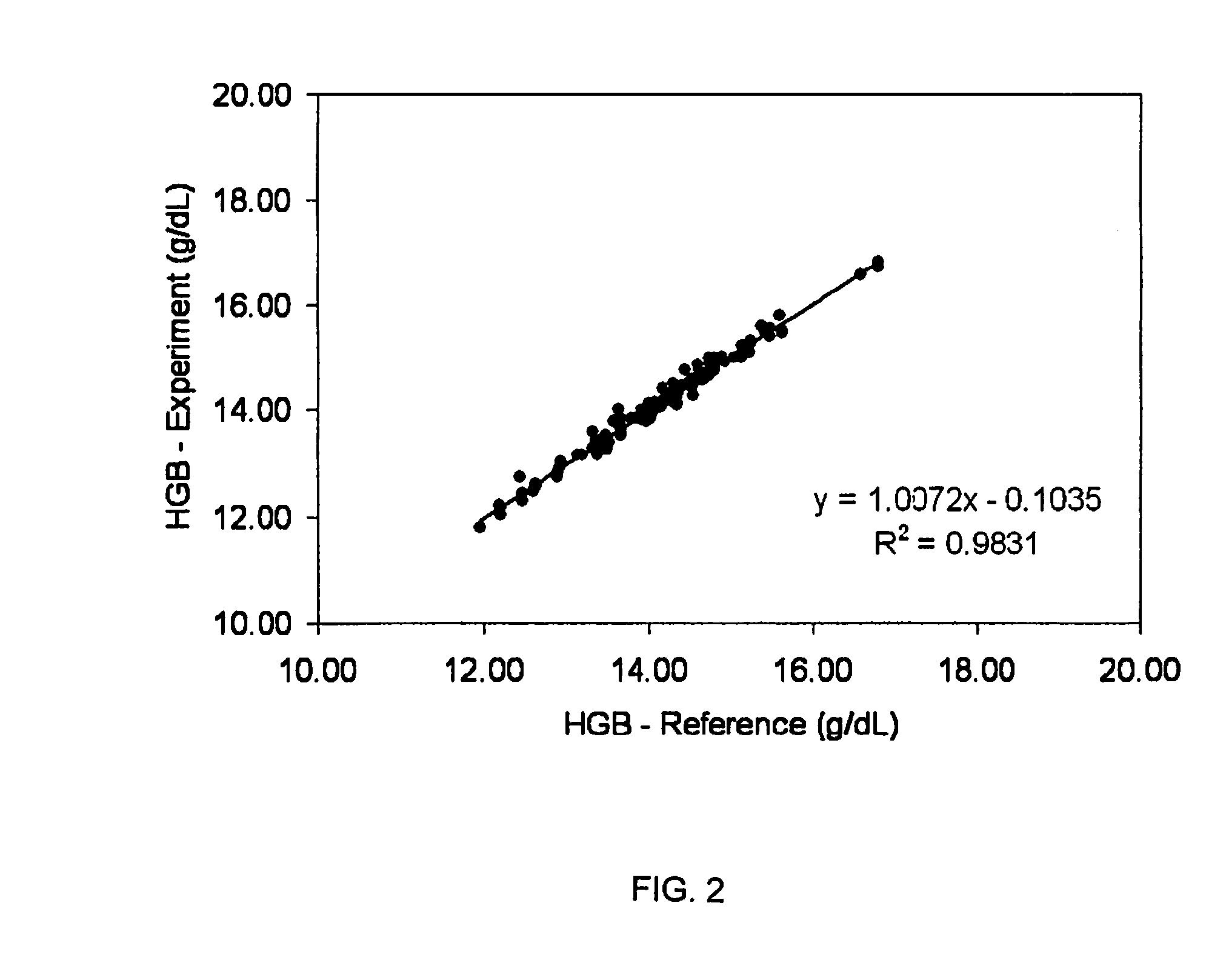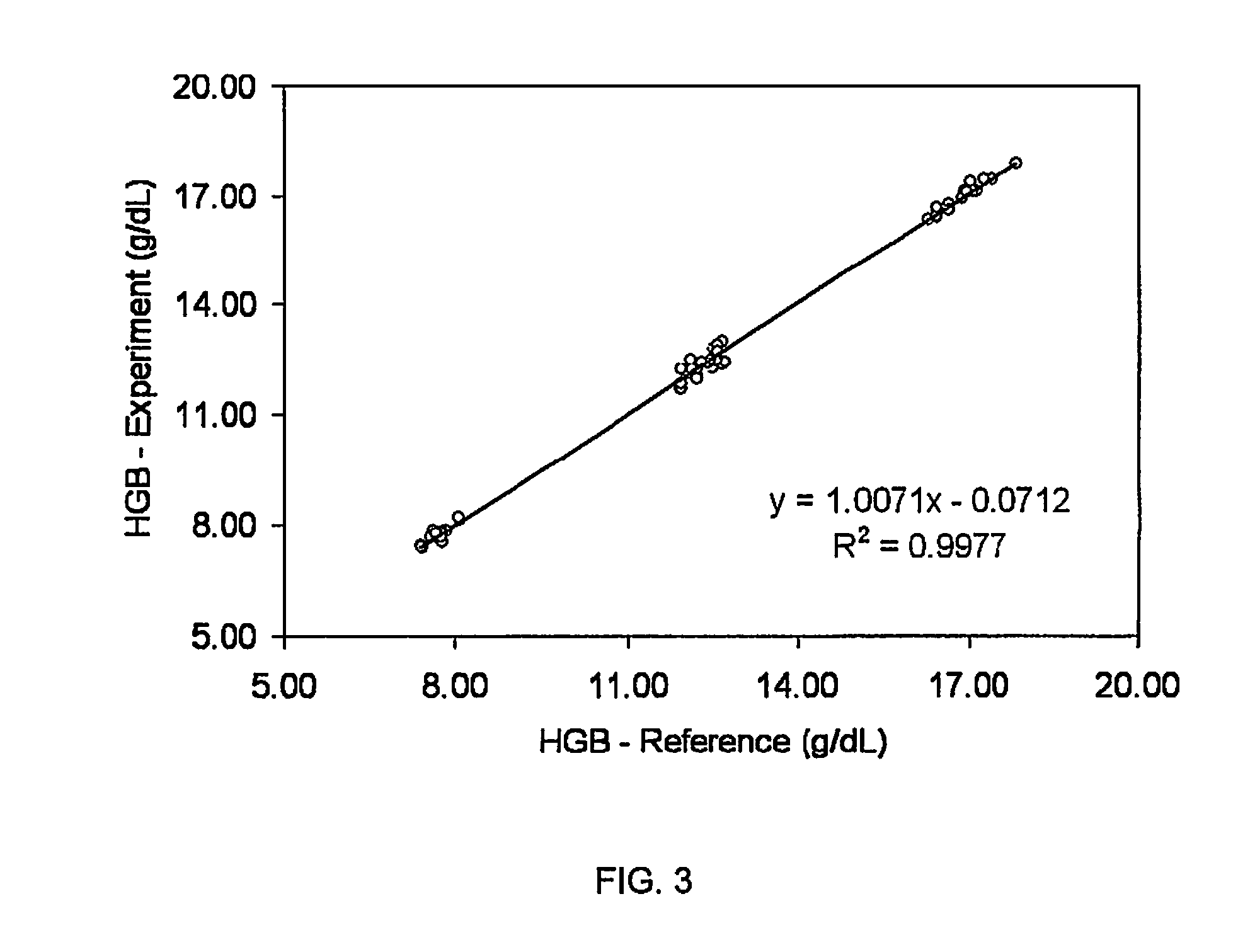Method of using ligand-free lysing agent in hemoglobin analysis
a lysing agent and hemoglobin technology, applied in the field of lysing agents, can solve the problems of reducing the accuracy of hemoglobin measurement, and requiring a more rapid lysis than can be achieved in modern automated hematology analyzers, and achieve the effect of eliminating imidazol
- Summary
- Abstract
- Description
- Claims
- Application Information
AI Technical Summary
Benefits of technology
Problems solved by technology
Method used
Image
Examples
example 1
[0055]The purpose of this example is to demonstrate that a combination of free methemoglobin (>50%) and unlysed red blood cells or fragments of red blood cells (<50%) resulting from a ligand-free lysing agent can match the performance of a reference lysing agent for an analysis of hemoglobin. The free methemoglobin component exhibits low absorbance; the unlysed red blood cells or fragments of red blood cells exhibit high absorbance. In this example, the diluent used was the Diluent / Sheath for the CELL-DYN® Sapphire™, CELL-DYN® Ruby™, CELL-DYN® 3200, and CELL-DYN® 4000 systems (REF #01H73-01), commercially available from Abbott Laboratories.
[0056]The reference lysing agent used in this example was the CN-Free HGB / NOC Lyse for the CELL-DYN® Ruby™ and CELL-DYN® 3200 systems (REF #03H80-02), commercially available from Abbott Laboratories. This reference lysing agent for determination of hemoglobin contains at least one lysing component to rupture the membranes of red blood cells and at...
example 2
[0062]The purpose of this example is to demonstrate the possibility of formulating a ligand-free lysing agent by using combinations of lysing agents and adjusting final pH of the lysing agent in order to elevate absorbance values, with an elevated value of pH, or in order to reduce absorbance values, with a reduced value of pH.
[0063]Various components of a lysing agent, as well as different combinations of lysing agent and diluent, were investigated to optimize the method of hemoglobin analysis. More particularly, tetradecyl trimethyl ammonium bromide (TTAB) and amine oxide-based compounds, as well as the final pH of the lysing agent, were investigated.
[0064]A CELL-DYN® 3200 hematology analyzer, commercially available from Abbott Laboratories, was used in this example. The reference reagents used in this study were: CN-Free HGB / NOC Lyse (REF #03H80-02), WBC Lyse (REF #08H52-01), and Diluent / Sheath (REF #01H73-01). All reference reagents, intended use for the CELL-DYN® Ruby and CELL-...
example 3
[0071]The purpose of this example is to demonstrate that the values of concentration of hemoglobin determined with ligand-free lysing agents closely match well those values determined by reference lysing agents. This example utilized three samples of whole blood and one control sample at the normal level.
[0072]A CELL-DYN® 3200 hematology analyzer, commercially available from Abbott Laboratories, was used in this example.
[0073]The reference lysing agents were the same as those described in EXAMPLE 2.
[0074]The optimal formulation of the ligand-free lysing agent is shown in TABLE 1 of EXAMPLE 1. The lysing agent and diluent for white blood cells used to support the hemoglobin determination were the same as those described in EXAMPLE 2.
[0075]Comprehensive hematology assay results are shown in TABLE 5. In the table, “WBC” represents white blood cells (thousands per microliter), “NE” represents neutrophils (%), “LY” represents lymphocytes (%), “MO” represents monocytes (%), “EO” represent...
PUM
| Property | Measurement | Unit |
|---|---|---|
| wavelength | aaaaa | aaaaa |
| concentration | aaaaa | aaaaa |
| concentration | aaaaa | aaaaa |
Abstract
Description
Claims
Application Information
 Login to View More
Login to View More - R&D
- Intellectual Property
- Life Sciences
- Materials
- Tech Scout
- Unparalleled Data Quality
- Higher Quality Content
- 60% Fewer Hallucinations
Browse by: Latest US Patents, China's latest patents, Technical Efficacy Thesaurus, Application Domain, Technology Topic, Popular Technical Reports.
© 2025 PatSnap. All rights reserved.Legal|Privacy policy|Modern Slavery Act Transparency Statement|Sitemap|About US| Contact US: help@patsnap.com



